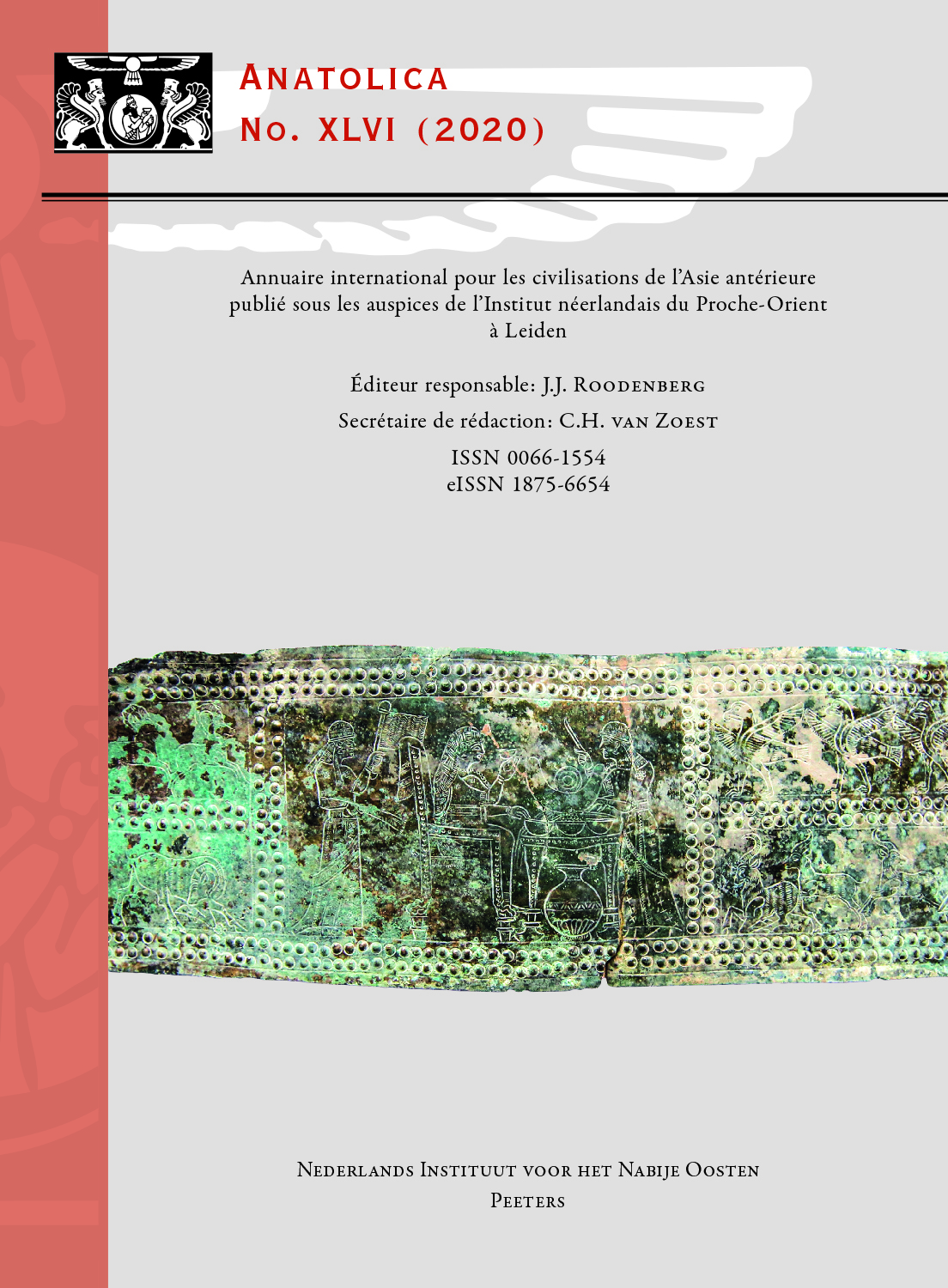 previous article in this issue previous article in this issue | next article in this issue  |

|
Document Details : Title: Supra-Regional Trends in Popular Iconography of the Ancient Near East Subtitle: The Case of Lead Plaques Author(s): MAKOWSKI, Maciej Journal: Anatolica Volume: 42 Date: 2016 Pages: 39-66 DOI: 10.2143/ANA.42.0.3178200 Abstract : Small anthropomorphic representations of lead, cast in open moulds to resemble openwork plaques, are a very distinct category of objects appearing for over six centuries, beginning with approximately 23rd century BC, throughout a vast territory of the Near East, from western Anatolia, through northern Syria to north-eastern Mesopotamia. What singles them out as particularly interesting among other iconographical sources of supra-regional dispersal, is their attribution to popular culture. This association is indicated foremost by the find contexts of such plaques, suggestive of their functioning within a household rather than official or public setting. Moreover, simple technical requirements and the material of which they were crafted made them easily available. Finally, their iconography, the repertoire and character of the represented figures, point to their considerable independence from the official, or elite, culture. Lead plaques are therefore an invaluable source for studies on the development of supra-regional patterns within popular culture, a phenomenon as yet poorly recognized in the Ancient Near East. This article aims at analyzing the degree of convergence of particular features throughout the plaques’ area of distribution, especially as regards the repertoire of representations, and at establishing the cause for their popularity over such a vast territory. An attempt will be made at placing these observations in a wider context – of trends observable at that time in the popular culture of the ancient Near East – by comparing them to the closely related Mesopotamian terracotta plaques. |
 |
